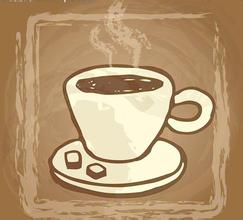A brief introduction to the history and culture of the origin and development of Hawaiian boutique coffee beans full of water

The earliest coffee cultivation in Hawaii had adopted the model of large-scale coffee plantations, and at that time, coffee had not yet become a widely grown crop in the world, and the production and sale of Kona coffee had experienced several ups and downs. After the outbreak of World War I, the demand for coffee increased sharply, and the government bought a lot of coffee for soldiers in order to maintain their combat ability. the rise in demand led to a rise in prices, and Kona coffee was no exception. The period from the outbreak of World War I to 1928 was the golden age of Kona Coffee. But the Great Depression that followed dealt a heavy blow to Kona Coffee. In 1940, the second World War caused the price of coffee to rise again. In order to avoid excessive price increases, the US government set a price cap for coffee. Even so, coffee farmers in Hawaii got a lot of benefits. During this period, their means of transportation for transporting coffee fruits were all replaced by donkeys and jeeps.
Establish a position
In the 1970s and 1980s, the price of Kona Coffee experienced several ups and downs, but it was from this period that Kona Coffee established itself as the top coffee in the world. Even though Kona Coffee is famous all over the world, its output remains at a relatively low level.
Kona coffee beans are average and neat in shape, with strong sour and sweet taste, moist and smooth taste. Because they grow on volcanoes and have high-density artificial farming, each bean can be said to be a spoiled "lady" with beautiful, plump and baby-like skin.
Although Hawaii is often affected by tornadoes, the climatic conditions are very suitable for the coffee industry. There is plenty of rain and sunshine, and there is no worry of frost. In addition, there is a strange natural phenomenon called "free shade". On most days, around 2 o'clock in the afternoon, white clouds appear in the sky, providing the necessary shade for the coffee trees. In fact, it is such superior natural conditions that make Arabica coffee in the Kona region produce more coffee than any other plantation in the world, and always maintain high quality, unique growth and climate environment to create a stronger coffee flavor.
But to the regret of coffee fans, only about 1400 hectares of coffee is produced. And because of Hawaii's high income and a large number of tourists, Kona coffee is so expensive that it is even sold as "kona blend" (no more than 5 per cent of Kona beans). Neighboring islands such as maui, kauai and molokai are also growing coffee commercially. In Hawaii, you can watch the fiery sunset sink into the red-orange sea, feel the fresh air filled with the scent of flowers, and sit by the sea and drink a cup of Kona coffee. I'm afraid there is no place in the world that can offer you such enjoyment.
The earliest settlers in Hawaii arrived here between 300 and 400 AD, and historians speculated that they were from the Marcos Islands. People are scattered into different tribes that live on the island and are led by hereditary chiefs. The earliest Hawaiian residents created the rich musical culture of Hawaii, although not many words have been preserved.
Europeans discovered Hawaii by accident. They were looking for a legendary passage to the east where spices were produced, but they found the richest pearl in the Pacific Ocean. A captain named James Cook landed at Kauai in 1778 to resupply his ship. He encountered severe cold and storms on his way back, so he had to return to Hawaii at the beginning of the next year and anchor on a beach in Kona. Since then, the Hawaiian islands have become an important port of call on world trade voyages. The chiefs of Hawaii exchanged sandalwood, the island's specialty, for weapons, goods and livestock with passing ships. From the 1820s, Western religion began to spread widely on the island, and many churches built at that time are still in use today.
Agriculture is the pillar of the local economy, producing sugar cane, pineapple, coffee, bananas and so on, of which pineapple production ranks first in the world. [1] Hawaii is suitable for the growth of sugar cane. Two-thirds of the land in the archipelago grows sugarcane, producing about 1 million tons of crude sugar each year. It is equivalent to 10% of the total sugar consumption in the United States each year, so it is called the sugar island of the United States. [4] Food processing is the main industry, with a few oil refining, chemical industry, cement and so on. Food and major industrial products are dependent on imports. Due to the pleasant climate and beautiful scenery, the tourism industry is well developed, with an average annual tourist volume of more than 7 million. Oahu is an area with a concentrated tourism industry. [1]
According to the Bank of Hawaii, the ripple effect of tourists' spending in Hawaii is 2, that is, for every $1 spent by tourists, it will increase the local total output value by $2. Tourism income accounts for 60% of the local gross domestic product, so that Hawaii's economic growth rate is always higher than the average economic growth level of the United States. [1]
Kona coffee beans are average and neat in shape, with strong sour and sweet taste, moist and smooth taste. Because they grow on volcanoes and have high-density artificial farming, each bean can be said to be a spoiled "lady" with beautiful, plump and baby-like skin.
As tourism plays an important role in Hawaii's economy, the Hawaiian state government attaches great importance to protecting the environment, protecting tourism resources, and paying attention to the development of "clean" industries. such as marine science, aquaculture, tropical agriculture, financial services, commercial centers, etc., in order to promote the development of tourism and promote economic development. Air traffic in Hawaii occupies a very important position, and the routes between the islands are mainly flown by two airlines: Hawaiian Airlines and Aloha Airlines. Honolulu International Airport ─ is the most important aviation pivot in the state, which terminates most routes to and from Hawaii in the United States, and transfers to other islands. There are also routes to big cities in Asia, such as Tokyo, Osaka, Nagoya, Seoul, Taipei, Sydney, Auckland and other old Hawaii, with strict social hierarchy. The Karp system divides people's grades and stipulates that men are superior to women. The highest social classes are chiefs and priests, the lowest are slaves, and those in the middle are civilians. The Karp system stipulates that where people of different levels fish and hunt, where they farm and harvest, what beaches they swim and play, what they eat and how they dress, violators are capital crimes.
Hawaiians believe in gods and fatality. they believe that the power of God depends on the rank and age of God's family, so the status of people is also determined by the status of the family in society and the generation and age of people in the family. The older the seniority, the older the seniority. Hawaiians believe that if there is life, there is "Manai", which is the spirit and aura obtained from distant ancestors and gods. Hawaiians believe that souls are immortal after death, and the spirits of our ancestors often come back to bless their descendants. It's just that ordinary people have very little hemp, and they don't always get it from the gods in heaven like the chief. In order to protect their own Ma Nai, people taboo their own intimate clothes for other people to use.
Although Hawaii is often affected by tornadoes, the climatic conditions are very suitable for the coffee industry. There is plenty of rain and sunshine, and there is no worry of frost. In addition, there is a strange natural phenomenon called "free shade". On most days, around 2 o'clock in the afternoon, white clouds appear in the sky, providing the necessary shade for the coffee trees. In fact, it is such superior natural conditions that make Arabica coffee in the Kona region produce more coffee than any other plantation in the world, and always maintain high quality, unique growth and climate environment to create a stronger coffee flavor.
But to the regret of coffee fans, only about 1400 hectares of coffee is produced. And because of Hawaii's high income and a large number of tourists, Kona coffee is so expensive that it is even sold as "kona blend" (no more than 5 per cent of Kona beans). Neighboring islands such as maui, kauai and molokai have also begun to grow coffee commercially. Real Kona coffee is indeed a treasure in the world and is hard to find. The best Kona coffee is divided into three grades: ExtraFancy, Fancy and NumberOne. This third-class coffee is produced on manors and under natural conditions. Most of the coffee on the market that calls itself "Kona" contains less than 5% of the real Hawaiian Kona coffee. Another good Hawaiian coffee can be found in the United States-Hawaiian Kaj Farm Coffee (KaiFarms).
The smell of Hawaii
In Hawaii, you can watch the fiery sunset sink into the red-orange sea, feel the fresh air filled with the scent of flowers, and sit by the sea and drink a cup of Kona coffee. I'm afraid there's no place in the world that can offer you such enjoyment.
Important Notice :
前街咖啡 FrontStreet Coffee has moved to new addredd:
FrontStreet Coffee Address: 315,Donghua East Road,GuangZhou
Tel:020 38364473
- Prev

Flavor Flavor Aroma Characteristics Description
Kona coffee prices went through several ups and downs in the 1970s and 1980s, but it was during this period that Kona coffee established itself as the world's top coffee. Even though Kona coffee has become famous all over the world, its yield has remained relatively low. Kona coffee beans are evenly shaped, have intense acidity and sweetness, and taste wet and smooth.
- Next

A brief introduction to the planting Market Price of Hawaiian Fine Coffee Bean varieties full of Flower scent
The smell of Hawaii is in Hawaii, you can watch the fiery sunset sink into the red-orange sea, feel the fresh air filled with the scent of flowers, and sit by the sea and drink a cup of Kona coffee. There is probably no place in the world that can provide you with such enjoyment. Hawaii's earliest coffee cultivation had adopted the model of large-scale coffee plantations, and at the time, coffee was
Related
- Detailed explanation of Jadeite planting Land in Panamanian Jadeite Manor introduction to the grading system of Jadeite competitive bidding, Red bid, Green bid and Rose Summer
- Story of Coffee planting in Brenka region of Costa Rica Stonehenge Manor anaerobic heavy honey treatment of flavor mouth
- What's on the barrel of Blue Mountain Coffee beans?
- Can American coffee also pull flowers? How to use hot American style to pull out a good-looking pattern?
- Can you make a cold extract with coffee beans? What is the right proportion for cold-extracted coffee formula?
- Indonesian PWN Gold Mandrine Coffee Origin Features Flavor How to Chong? Mandolin coffee is American.
- A brief introduction to the flavor characteristics of Brazilian yellow bourbon coffee beans
- What is the effect of different water quality on the flavor of cold-extracted coffee? What kind of water is best for brewing coffee?
- Why do you think of Rose Summer whenever you mention Panamanian coffee?
- Introduction to the characteristics of authentic blue mountain coffee bean producing areas? What is the CIB Coffee Authority in Jamaica?

